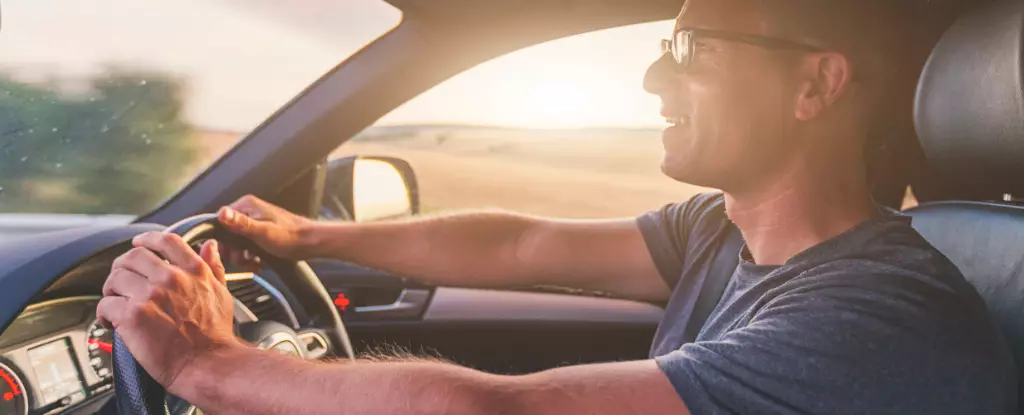As we navigate our daily lives, many of us become unwittingly exposed to ultraviolet (UV) radiation, particularly while traveling in vehicles. Ultraviolet radiation primarily comes in two forms: UVA and UVB. Approximately 95% of the UV radiation that reaches the Earth consists of UVA, which can penetrate deeper into the skin and contribute to skin damage and increased cancer risk. UVB, on the other hand, accounts for about 5% of the total UV exposure and is primarily responsible for causing sunburn and cataracts. Given that our cars are often a sanctuary from the outside world, many drivers may not realize that they are still susceptible to UV damage while seated comfortably behind the wheel.
The type of glass installed in cars plays a pivotal role in determining the level of UV radiation that penetrates into the vehicle interior. Most residential and commercial window glass effectively blocks UVB radiation, sparing the skin from immediate effects. However, only laminated glass offers complete protection against UVA, which poses a greater long-term risk. For automobile windshields, the incorporation of laminated glass prevents approximately 98% of UVA radiation from entering the vehicle. Unfortunately, the side and rear windows are typically constructed from tempered glass, which does not provide the same level of protection.
Studies examining various vehicles have revealed that the amount of UVA radiation transmitted through these side and rear windows can range significantly—anywhere from 4% to nearly 56%. The level of UV protection is influenced by factors such as the glass’s color, its tint, and whether any protective coatings have been applied. Adding to the complexity of this issue is the finding that window tinting can block around 95% of UVA rays, enhancing protection for drivers and passengers alike.
It may come as a surprise, but dermatological studies in the United States have illustrated a concerning trend regarding skin cancer’s prevalence on the driver’s side of the body. Data shows that drivers who sit on the left side are more likely to develop skin cancers on their left arms, faces, and scalps. Notably, individuals have experienced an alarming twenty-fold increase in the incidence of skin cancer on the driver’s side arm compared to the passenger side. This is particularly worrying when it is revealed that 74% of melanoma in situ cases were found on the left side of the body versus only 26% on the right.
Eye health is another area compromised by UV exposure while driving. Research suggests that cataracts and other ocular lesions are more frequently found on the driver’s side, reiterating the need for protective measures.
The discourse surrounding UV exposure extends beyond vehicles. Many homeowners experience detrimental effects from sunlight filtering through their residential windows. Single-pane glass can allow substantial amounts of UVA radiation—between 45% and 75%—to permeate living spaces, posing a risk of skin damage for occupants. Conversely, modern double-glazed or tinted windows—especially those treated with reflective technology—can significantly decrease UVA transmission, ensuring a safer indoor environment.
Remarkably, research on office buildings suggests an overall enhancement in UV protection. Most commercial window glass permits less than 25% of UVA radiation to pass through, with high-performance glass showing remarkable advancements through chemical treatments and coatings aimed at UV absorption.
Understanding the risks involved in cumulative UV exposure while driving or indoors can empower individuals to take proactive measures. In light of these findings, individuals who frequently find themselves behind the wheel for extended periods without tinted windows should consider wearing sunscreen, especially during peak sunlight hours while driving. The time of year, latitude, and skin type also play significant roles in determining appropriate sun protection measures.
It is vital that individuals remain vigilant during warmer months, when prolonged exposure through unprotected windows can lead to burns in as little as one hour. Sunscreen becomes even more crucial when residing near windows that allow substantial UVA radiation, with the risk of burns in half the time compared to direct outdoor exposure.
Additionally, protective eyewear should be prioritized, especially when driving or spending time near sunny windows. Strategies such as installing UV-blocking window films can significantly enhance protection, ensuring that both drivers and passengers stay safe from the hidden dangers of UV radiation while enjoying their journeys.
Through increased awareness and protective measures, we can safeguard our skin and overall health against the silent risks associated with UV exposure in cars and built environments alike.


Leave a Reply